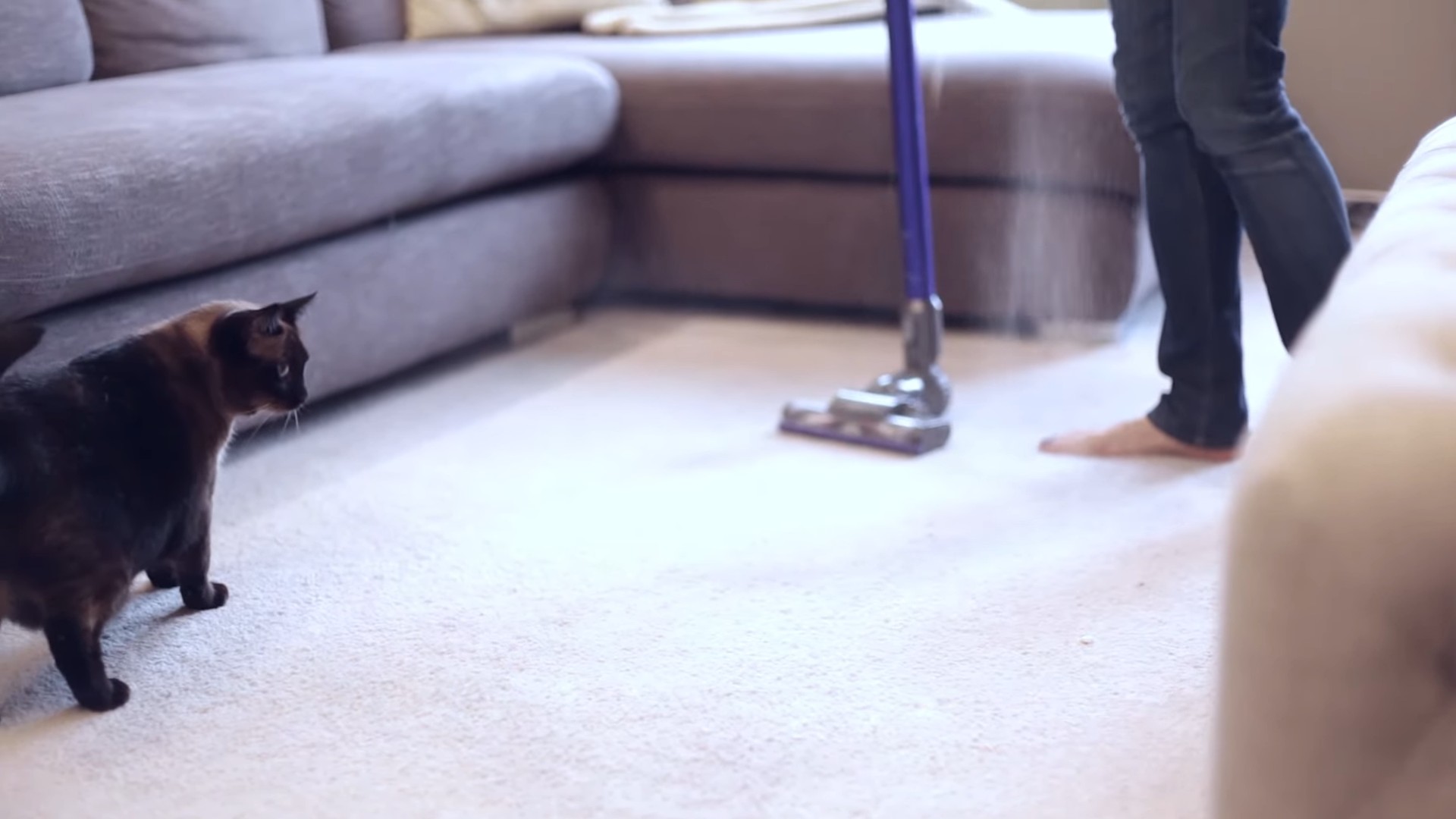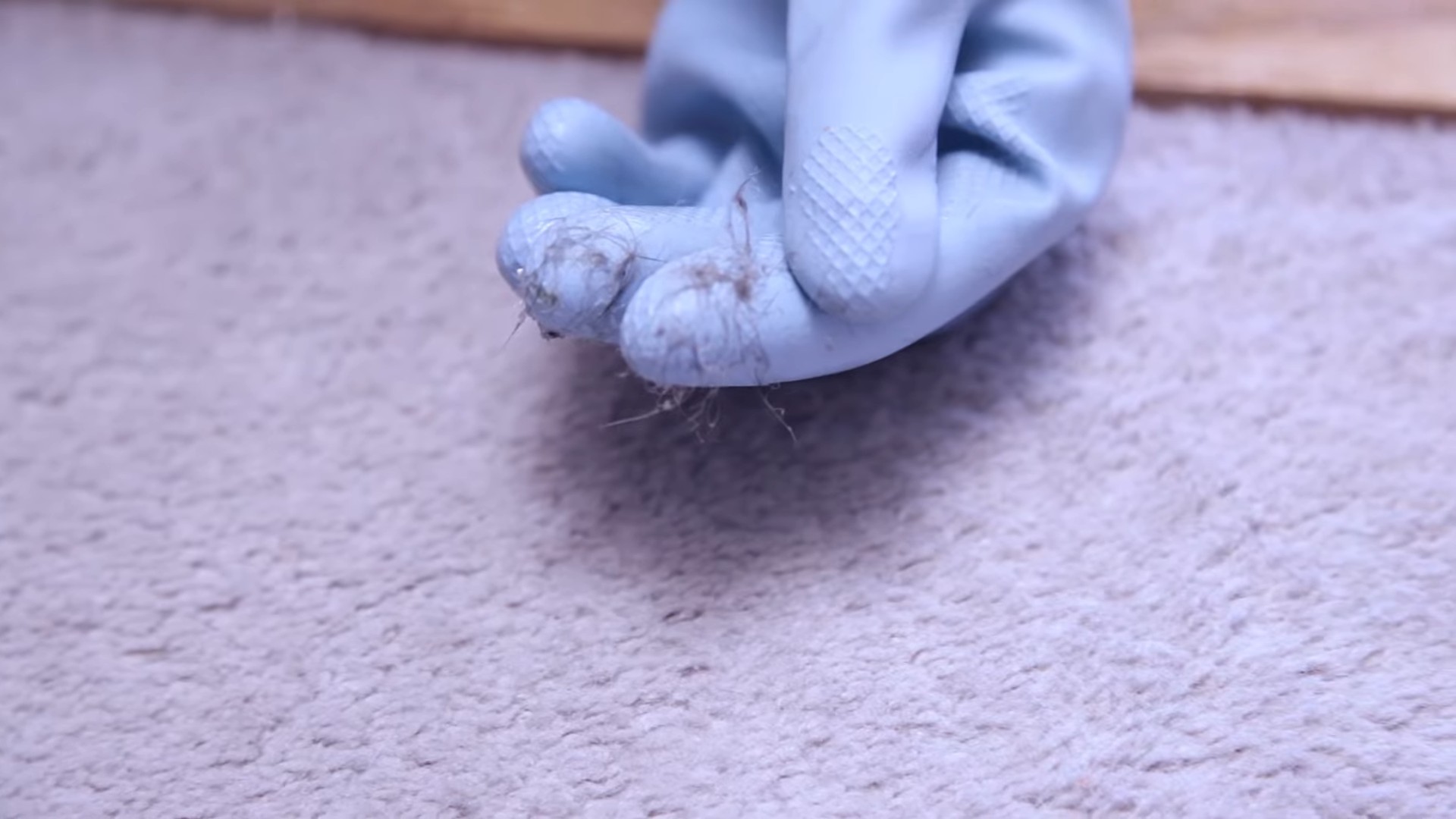Pet hair removal tips – are you tired of battling a never-ending blizzard of fur in your home? I know I am! As a pet lover, I adore my furry friends, but sometimes I feel like I’m living in a giant tumbleweed made of their shed hair. It’s on the furniture, clinging to my clothes, and even floating in the air!
The struggle is real, and it’s a problem that has plagued pet owners for centuries. While our ancestors might have relied on simple tools like brushes and elbow grease, we now have a plethora of options, from high-tech vacuums to specialized cleaning products. But let’s be honest, many of these solutions are either expensive or just plain ineffective. That’s where these DIY pet hair removal tricks come in!
This article is your ultimate guide to reclaiming your home from the furry invasion. I’m going to share some simple, affordable, and surprisingly effective DIY hacks that will make pet hair removal a breeze. These aren’t just quick fixes; they’re tried-and-true methods that I’ve personally tested and perfected over the years. So, get ready to say goodbye to pet hair woes and hello to a cleaner, fresher, and more enjoyable living space. Let’s dive into these amazing pet hair removal tips!

DIY Pet Hair Removal: Conquer the Fur!
Okay, fellow pet lovers, let’s be honest: we adore our furry companions, but the shedding? Not so much. It’s a constant battle against a never-ending tide of hair clinging to everything we own. But fear not! I’m here to share my tried-and-true DIY pet hair removal hacks that will help you reclaim your home from the furpocalypse. These methods are budget-friendly, effective, and use items you probably already have around the house. Let’s get started!
The Essentials: Tools of the Trade
Before we dive into specific techniques, let’s gather our arsenal. Having the right tools makes all the difference in tackling pet hair efficiently.
* Rubber Gloves: These are your secret weapon! The texture of rubber creates static electricity, which attracts hair like a magnet.
* Microfiber Cloths: These are fantastic for dusting and wiping down surfaces. They trap hair effectively and are washable.
* Vacuum Cleaner with Attachments: A good vacuum is essential, especially one with a brush attachment for upholstery and crevices.
* Lint Roller: The classic for a reason! Perfect for quick touch-ups on clothing and smaller areas.
* Spray Bottle: For creating our DIY cleaning solutions.
* Squeegee: Surprisingly effective on carpets and upholstery.
* Baking Soda: A natural deodorizer and helps loosen hair.
* White Vinegar: Another natural cleaner and deodorizer.
* Fabric Softener: Helps loosen hair and reduce static cling.
* Old Toothbrush: For getting into tight corners and seams.
Tackling Upholstery and Furniture
Upholstery is a magnet for pet hair. Here’s how to combat it:
1. Vacuum First: Always start by vacuuming your furniture thoroughly. Use the upholstery attachment to get into all the nooks and crannies. Pay special attention to seams and areas where your pet likes to hang out.
2. Rubber Glove Magic: Put on a pair of rubber gloves (the kind you use for washing dishes works perfectly). Lightly dampen the gloves with water. Now, run your gloved hands over the upholstery in a sweeping motion. You’ll be amazed at how much hair clings to the gloves! Rinse the gloves periodically to remove the accumulated hair.
3. Squeegee Power: If you don’t have rubber gloves, a squeegee works similarly. Drag the squeegee across the upholstery. The rubber blade will grab the hair and pull it up.
4. Fabric Softener Spray: Mix a solution of water and fabric softener (about 1 part fabric softener to 3 parts water) in a spray bottle. Lightly mist the upholstery with the solution. Let it sit for a few minutes, then wipe it down with a microfiber cloth. The fabric softener will help loosen the hair and reduce static cling, making it easier to remove.
5. Baking Soda Boost: For extra stubborn hair or lingering odors, sprinkle baking soda over the upholstery. Let it sit for at least 15 minutes (or even overnight for really bad cases). Then, vacuum it up thoroughly. The baking soda will help loosen the hair and absorb odors.
6. Old Toothbrush Detail Work: Use an old toothbrush to get into tight corners, seams, and around buttons or zippers. The bristles will help dislodge trapped hair.
Conquering Carpets and Rugs
Carpets and rugs are notorious for trapping pet hair deep within their fibers. Here’s how to get them clean:
1. Vacuum, Vacuum, Vacuum: Again, start with a thorough vacuuming. Use a vacuum with a strong suction and a beater bar to agitate the carpet fibers and loosen the hair. Go over the area multiple times in different directions.
2. Baking Soda Treatment: Sprinkle baking soda liberally over the carpet or rug. Let it sit for at least 30 minutes (or longer for heavily soiled areas). The baking soda will help loosen the hair and absorb odors.
3. Vinegar Rinse (Optional): For a deeper clean, you can lightly mist the carpet with a solution of equal parts white vinegar and water before sprinkling on the baking soda. The vinegar will help break down dirt and grime. However, always test a small, inconspicuous area first to ensure the vinegar doesn’t damage the carpet.
4. Vacuum Again: After the baking soda has sat for the appropriate amount of time, vacuum it up thoroughly.
5. Squeegee Scrub: Dampen the carpet slightly with water. Then, use a squeegee to scrub the carpet fibers. The rubber blade will grab the hair and pull it up. You’ll be amazed at how much hair comes up, even after vacuuming!
6. Lint Roller for Small Areas: For smaller rugs or high-traffic areas, a large lint roller can be surprisingly effective.
Winning the War on Clothing
Pet hair on clothing is a constant battle. Here’s how to keep your wardrobe fur-free:
1. Lint Roller Power: The classic lint roller is your best friend for quick touch-ups. Keep one in your car, your purse, and by the door for last-minute hair removal.
2. Dryer Sheet Trick: Toss your clothes in the dryer with a dryer sheet for about 10 minutes on a low heat setting. The dryer sheet will help loosen the hair and reduce static cling. Clean the lint trap afterwards, as it will likely be full of pet hair.
3. Rubber Gloves (Again!): Dampen a rubber glove and run it over your clothing. The hair will cling to the glove.
4. Packing Tape Solution: Wrap packing tape around your hand, sticky side out. Pat the tape over your clothing to pick up hair.
5. Wash Clothes Inside Out: When washing clothes, turn them inside out. This will help prevent the hair from clinging to the outside of the garment.
6. Vinegar in the Wash: Add 1/2 cup of white vinegar to your washing machine during the rinse cycle. The vinegar will help loosen the hair and reduce static cling.
Preventative Measures: Staying Ahead of the Shed
The best way to deal with pet hair is to prevent it from accumulating in the first place. Here are some preventative measures you can take:
1. Regular Grooming: Brush your pet regularly, ideally daily. This will remove loose hair before it has a chance to shed all over your house. Invest in a good quality brush that is appropriate for your pet’s coat type.
2. Bathing: Bathe your pet regularly (but not too often, as this can dry out their skin). Bathing helps remove loose hair and dander.
3. Diet: A healthy diet can help reduce shedding. Make sure your pet is eating a high-quality food that is rich in essential fatty acids.
4. Designated Pet Areas: If possible, designate specific areas in your home for your pet. This will help contain the shedding to those areas.
5. Furniture Covers: Use furniture covers to protect your upholstery from pet hair. These are easy to remove and wash.
6. Air Purifier: An air purifier with a HEPA filter can help remove pet dander and hair from the air.
DIY Cleaning Solutions: Natural and Effective
Here are a couple of my favorite DIY cleaning solutions for tackling pet hair and odors:
* All-Purpose Cleaner: Mix equal parts white vinegar and water in a spray bottle. Add a few drops of essential oil (like lavender or lemon) for a pleasant scent. This cleaner is great for wiping down hard surfaces and removing pet odors.
* Carpet Deodorizer: Mix equal parts baking soda and cornstarch. Add a few drops of essential oil. Sprinkle the mixture over your carpet, let it sit for at least 30 minutes, and then vacuum it up. This will freshen your carpet and absorb odors.
Extra Tips and Tricks
* Static Cling: Static cling can make pet hair even more difficult to remove. Use a humidifier to increase the humidity in your home, which will help reduce static electricity.
* Pet Beds: Wash your pet’s bedding regularly to remove hair and odors.
* Car Interiors: Use the same techniques for removing pet hair from your car’s interior as you would for your furniture. A rubber glove or squeegee works wonders on car seats.
* Be Patient: Removing pet hair can be a time-consuming process. Don’t get discouraged if you don’t see results immediately. Keep at it, and you’ll eventually conquer the fur!
I hope these tips and tricks help you win the battle against pet hair! Remember, consistency is key. By incorporating these methods into your regular cleaning routine, you can keep your home clean and comfortable, even with furry friends around. Good luck!

Conclusion
So, there you have it! Mastering pet hair removal doesn’t have to be a constant battle against shedding. By incorporating these simple yet effective DIY tricks into your cleaning routine, you can reclaim your home and spend less time wrestling with fur and more time enjoying the company of your beloved furry friends. The beauty of these methods lies in their accessibility and affordability. You likely already have most of the necessary supplies in your home, making this a truly budget-friendly solution to a common pet owner problem.
Why is this a must-try? Because it works! These aren’t just theoretical suggestions; they are tried-and-true methods that have helped countless pet owners conquer the never-ending shedding saga. Imagine a home where your furniture isn’t perpetually covered in a layer of fur, where your clothes remain pristine even after a cuddle session, and where you can finally invite guests over without feeling the need to apologize for the “pet-friendly” décor. This is the reality that awaits you when you embrace these DIY pet hair removal techniques.
But don’t just take our word for it. The real magic happens when you adapt these techniques to your specific needs and preferences. For instance, if you have delicate upholstery, consider using a gentler approach like a microfiber cloth dampened with water instead of a rubber glove. Or, if you’re dealing with particularly stubborn pet hair embedded in carpets, try combining the baking soda method with a powerful vacuum cleaner designed for pet hair removal.
Variations and Suggestions:
* Fabric Softener Spray: Create a DIY fabric softener spray by mixing fabric softener with water in a spray bottle. Lightly mist your furniture and carpets before vacuuming to loosen the pet hair and make it easier to remove.
* Dryer Sheets: Keep a box of dryer sheets handy for quick touch-ups. Simply rub a dryer sheet over your clothes or furniture to attract and remove loose pet hair.
* Packing Tape: For small areas or delicate fabrics, wrap packing tape around your hand, sticky side out, and dab it over the surface to lift away pet hair.
* Squeegee on Carpets: Believe it or not, a window squeegee can be surprisingly effective at removing pet hair from carpets. Simply run the squeegee across the carpet surface to gather the hair into clumps that can be easily vacuumed up.
* Lint Rollers: While commercially available lint rollers are great, you can make your own by wrapping masking tape around a paint roller, sticky side out.
We are confident that these DIY pet hair removal tips will make a significant difference in your home. However, the best way to truly appreciate their effectiveness is to try them out for yourself. So, grab your rubber gloves, baking soda, and vacuum cleaner, and get ready to say goodbye to pet hair woes!
We encourage you to experiment with these techniques, adapt them to your specific needs, and most importantly, share your experiences with us! Let us know which methods worked best for you, any variations you discovered, and any other tips you have for conquering the pet hair battle. Your feedback will not only help us improve this guide but also inspire other pet owners to take control of their homes and enjoy a cleaner, more comfortable living space. Share your success stories and any challenges you faced in the comments below. Together, we can create a community of pet owners who are winning the war against shedding!
FAQ
Frequently Asked Questions About Pet Hair Removal
Q: Why is pet hair so difficult to remove?
A: Pet hair has a tendency to cling to fabrics due to its texture and static electricity. The barbs on the hair shaft can easily become entangled in the fibers of carpets, upholstery, and clothing, making it difficult to dislodge with simple brushing or vacuuming. Additionally, the oils in pet dander can cause the hair to adhere more strongly to surfaces.
Q: Are these DIY methods safe for all types of fabrics?
A: While most of these methods are generally safe, it’s always a good idea to test them on an inconspicuous area of the fabric first, especially if you’re dealing with delicate materials like silk or velvet. Avoid using harsh chemicals or abrasive tools that could damage the fabric. When in doubt, consult a professional cleaner.
Q: How often should I be cleaning to manage pet hair effectively?
A: The frequency of cleaning depends on the shedding habits of your pet and the amount of time they spend indoors. As a general rule, vacuuming carpets and upholstery at least once a week is recommended. For heavy shedders, you may need to vacuum more frequently, even daily. Regular brushing of your pet can also significantly reduce the amount of hair they shed around the house.
Q: What’s the best vacuum cleaner for pet hair removal?
A: Look for vacuum cleaners specifically designed for pet hair removal. These models typically have strong suction, specialized attachments like motorized brush heads, and HEPA filters to trap allergens and pet dander. Canister vacuums and robotic vacuums can also be effective for cleaning hard floors and reaching under furniture.
Q: Can these methods help with pet allergies?
A: While these methods primarily focus on removing pet hair, they can indirectly help with pet allergies by reducing the amount of allergens in your home. Pet dander, which is often attached to pet hair, is a common allergen. By removing the hair, you’re also removing some of the dander. However, for severe allergies, you may need to take additional measures, such as using air purifiers and washing your pet regularly.
Q: What if I have a pet that doesn’t shed much? Are these methods still useful?
A: Even pets that don’t shed much can still leave behind hair and dander. These methods can be helpful for maintaining a clean and allergen-free home, regardless of your pet’s shedding habits. Regular cleaning can also prevent the buildup of dust and other allergens that can affect your indoor air quality.
Q: How can I prevent my pet from shedding so much in the first place?
A: Regular grooming is key to reducing shedding. Brush your pet regularly to remove loose hair before it has a chance to fall out around the house. The frequency of brushing depends on your pet’s breed and coat type. A healthy diet and adequate hydration can also contribute to healthy skin and coat, which can minimize shedding. Consult with your veterinarian for specific recommendations on grooming and nutrition for your pet.
Q: Are there any natural remedies for reducing pet shedding?
A: Some pet owners have found success with natural remedies like adding omega-3 fatty acids to their pet’s diet. Omega-3s can help improve skin and coat health, which can reduce shedding. You can also try using a deshedding shampoo during bath time. However, it’s important to consult with your veterinarian before making any significant changes to your pet’s diet or grooming routine.
Q: My pet’s hair is stuck in my car’s upholstery. Will these methods work there too?
A: Yes, many of these methods can be adapted for use in your car. A rubber glove, lint roller, or vacuum cleaner with a hose attachment can be effective for removing pet hair from car seats and carpets. Be careful when using water or cleaning solutions on car upholstery, as some materials may be sensitive to moisture.
Q: I’ve tried everything, and I still can’t get rid of all the pet hair. What should I do?
A: If you’ve exhausted all DIY options and are still struggling with pet hair, it may be time to consult a professional cleaning service. Professional cleaners have specialized equipment and techniques for removing pet hair and allergens from your home. They can also provide advice on how to maintain a cleaner environment in the future.





Leave a Comment